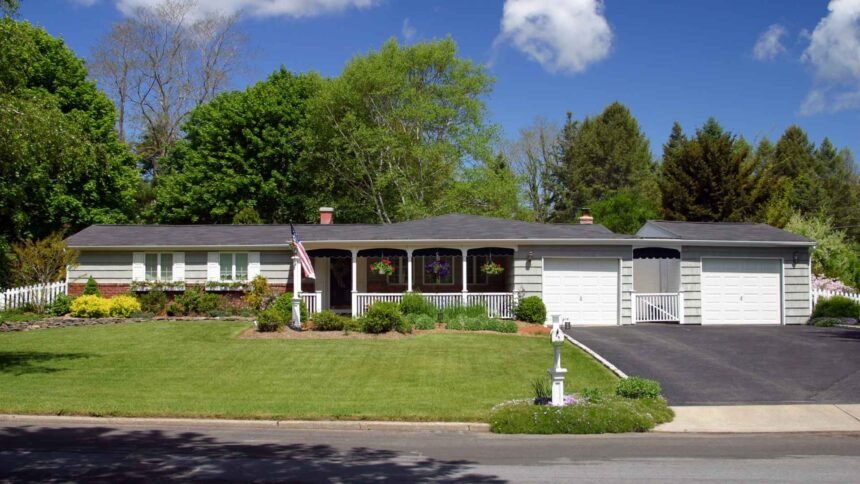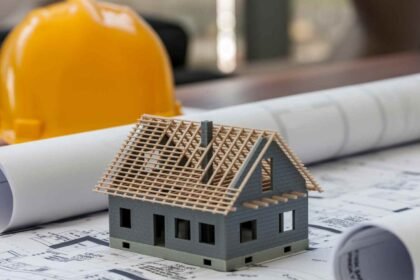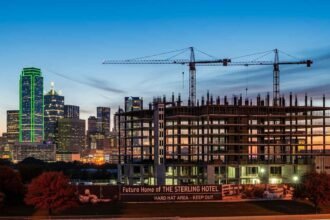As borrowing costs rise, home sales fall in the US
The U.S. housing market faces tough times as high borrowing costs continue to push buyers away. New data show that sales of newly built homes dropped in July 2025, even as economists hoped for a small rise. This decline highlights how expensive mortgages are, hurting demand, making it harder for families to buy homes. While the overall economy stays strong, the housing sector feels the pinch from the Federal Reserve’s tight policies. Experts warn that this slump might last through the year, affecting builders, buyers, and the broader economy.
July Sales Data Reveals a Dip
Sales of new single-family homes fell 0.6% in July to a seasonally adjusted annual rate of 652,000 units, according to the Commerce Department’s Census Bureau. This drop came after a strong revision to June’s figures, which jumped to 656,000 units from an earlier estimate of 627,000. Economists had predicted sales would climb to 630,000 units, but reality proved otherwise. On a year-over-year basis, new home sales plunged 8.2%, signaling a deeper slowdown compared to last year.
New homes make up about 14% of all U.S. home sales, but they serve as a key gauge for the market’s health. Builders often lead the way in responding to economic shifts, and this data suggests caution. Monthly numbers can swing wildly due to weather or other factors, but the trend points downward. High mortgage rates, hovering around 6.58% for a 30-year fixed loan, play a big role. That’s down from 7.04% earlier in the year, but still too steep for many potential buyers.
In contrast, existing home sales showed a spark of life. They surged 1.3% in July to an annual rate of 3.95 million units, marking the first real uptick after nine months of declines. This rebound hints that lower rates are starting to lure back some buyers in the resale market. Yet, for new homes, the story differs—perhaps because builders deal with higher construction costs and slower permits.
Inventory Builds Up, Pressuring Builders
Even as sales slowed, the stock of unsold new homes eased slightly to 499,000 units in July, down from 502,000 in June. At the current pace, it would take 9.2 months to sell all these homes, the same as in June. That’s near levels not seen since October 2007, right before the last big housing crash. Completed new homes ready for sale hit a 16-year high, forcing builders to rethink their plans.
This glut stems from years of underbuilding after the 2008 financial crisis, combined with recent surges in construction. But with fewer buyers, homes sit longer on the market. Builders respond by cutting prices or offering incentives, like covering closing costs or upgrading features. A survey from the National Association of Home Builders found that more builders slashed prices in August than at any time since 2022.
For existing homes, inventory rose to 1.55 million units, equaling 4.6 months of supply. That’s better than last year but still short of the balanced six-month mark. More homes on the market could ease prices over time, but cash buyers and investors snag 31% and 20% of deals, respectively, keeping competition fierce.
Prices Drop as Affordability Worsens
The median price for a new home tumbled 5.9% from a year ago to $403,800 in July, the lowest in eight months. Most sales happened under $499,000, showing builders target more affordable segments. This price dip helps some, but it doesn’t fully offset high borrowing costs. A typical buyer now faces monthly payments hundreds of dollars higher than a few years ago, when rates dipped below 3% during the pandemic.
Wage growth has slowed to 3.9% annually, down from 4.3% earlier in 2024, making it tougher to keep up. First-time buyers, who make up just 28% of existing home purchases, struggle the most. In the existing market, median prices edged up 0.2% to $422,400, continuing a 25-month streak of gains but at a slower pace.
Regional Differences Highlight Uneven Impact
The sales drop wasn’t uniform across the country. In the Midwest, new home sales sank 6.6%, while the South saw a 3.5% decline. The Northeast held steady, and the West bucked the trend with an 11.7% increase. These variations reflect local economies: stronger job markets in the West might support more buying, while Midwest affordability issues hit harder.
For existing homes, the Northeast, South, and West gained ground, but the Midwest slipped. This patchwork shows that national trends mask local realities, where factors like job growth and migration play key roles.
Broader Economic Ripple Effects
The housing slowdown drags on the economy. Residential investment, including homebuilding and related services, likely contracted for a third straight quarter. Builders cut back on starts, and fewer sales mean less spending on furniture, appliances, and renovations. Jobs in construction and real estate could suffer if this persists.
Yet, the Fed’s policies aim to tame inflation, which has cooled but remains a concern. Chair Jerome Powell hinted at a possible rate cut in September, citing labor market risks. If rates fall, it could revive demand, but experts doubt a quick turnaround.
Outlook: Challenges Ahead with Glimmers of Hope
Economists like Daniel Vielhaber from Nationwide see little relief soon. “Affordability challenges and slower job growth serve as headwinds,” he said. “There’s little reason to expect a pick-up in sales through the end of the year.” Nancy Vanden Houten from Oxford Economics added that excess inventory will cap new starts and keep prices stable.
In the existing market, softer rates offer hope, but high prices and investor competition persist. If inventory grows and rates drop further, 2026 might bring balance. For now, buyers wait, builders adjust, and the market treads water.
This latest data underscores a housing market squeezed by high costs. While existing sales perk up, new home builders face steeper hurdles. Families dream of homeownership, but reality demands patience. As the Fed eyes changes, the coming months will test if relief arrives in time to spark a recovery. For many Americans, the path to a new home remains uphill, but not impossible.









